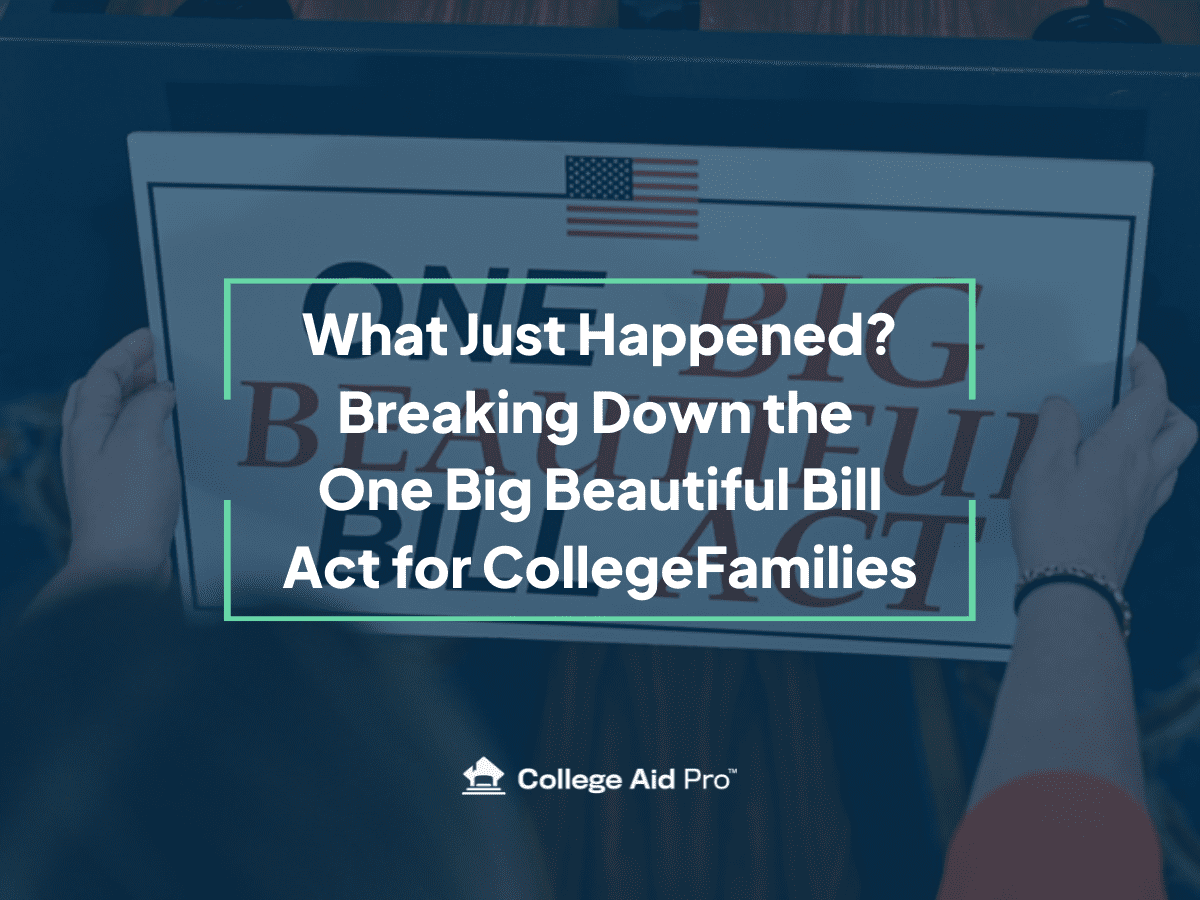The CSS Profile and the FAFSA have very different requirements and how they calculate your Expected Family Contribution. But when looking at the CSS profile vs the FAFSA, one major difference sticks out: The FAFSA doesn’t include home equity into the equation.
Now I’m sure you’re asking will the equity you’ve built in your home impact your college-bound child’s opportunity to secure adequate financial aid? Like most questions about college financial aid, the answer isn’t a simple yes or no. Let’s start with a more basic question, what is home equity?
Home equity is the amount of your home that you actually own. More specifically, your home equity is the market value of your home minus all liabilities. So, if you have a primary mortgage and a home equity line of credit (HELOC), both should be subtracted from your market value to get your home equity.
For most of our adult lives, the idea of building equity has always been a good thing. We purchase a home, make monthly payments on our mortgage and in return own more of our home. Unfortunately, for some parents, significant home equity can have a detrimental effect on a financial aid package for their college-bound children. This presents a planning opportunity for many families if you are in the know and understand how home equity works in the world of financial aid.
Home equity is not reported on the FAFSA. The FAFSA is the financial aid form required by almost every college in the US. It is used by the US Department of Education to assess federal need-based aid eligibility for grants, loans, and work study. About 90% of colleges use the Federal methodology (FAFSA) to award need-based aid from their school endowments as well. The majority of colleges will not look at your home equity to determine your need-based financial aid. However, there is a second financial aid form, used by some schools, called the CSS Profile that can use home equity in their financial aid eligibility calculation.
What’s The CSS Profile?
The CSS Profile is an additional financial aid application used by around 400+ colleges. Parents and students must complete the CSS Profile in addition to the FAFSA. Federal need-based aid eligibility is still determined by the FAFSA, but the CSS Profile is used by the colleges to determine aid that comes directly from the university’s endowment fund.
How Does The CSS Profile Calculate Financial Need?
The CSS Profile uses the Institutional Methodology to determine need-based aid eligibility. In the 2023-2024 application season, the CSS Profile assesses parent assets at a rate of approximately 5%. Your home equity is considered a parental asset. The CSS Profile asks for your home purchase price, purchase year, current value, and current debt. Their software calculates the equity in your home by subtracting your current debt from the current value. So, hypothetically, if you have $50,000 in home equity, you could be tacking $2,500 onto your total assets as they’re determined by the CSS Profile (and your student’s financial aid offer could drop by this amount).
Learn more about the Institutional Methodology used at most private schools: The 3 Different Types of Expected Family Contribution Explained
What Are The Rules Regarding Home Equity and the CSS Profile?
As with most things in the world of financial aid, it’s not as simple as a flat 5% calculation. Depending on the college or university, home equity may be capped at a certain rate due to bank limits on how much homeowners can borrow against their mortgage. Often the home equity cap will be a multiplier of a family’s income (think: 1.2x total income, or 2.0x total income).
This actually works in favor of families who are applying for aid.
For example, College A uses the full value of your home equity as a parental asset. If your current home equity is $300,000 at 5%, your parent contribution goes up by $15,000.
College B caps your home equity at 1.2x your total income. If your home equity is $300,000 and total family annual income is $180,000, your parent contribution only goes up by $10,800.
(1.2 x $180,000 = $216,000 x 5% = $10,800)
College A’s assessment of your parent contribution with full home equity adds an extra $4,200 compared to College B’s assessment that caps your equity.
Are All CSS Profile Schools Looking At Home Equity?
The short answer is no – they’re not. In fact, in the coming years, many college planning experts expect a trend where universities stop looking at home equity in a primary residence altogether. Some leading universities, such as Stanford, have already made this change. Other colleges that are generous with need-based financial aid are expected to follow suit.
Learn more about the CSS Profile: 2023-2024 CSS Profile Dos, Don’ts, and Updates
What About Vacation Homes or Rental Properties?
The rule regarding home equity caps or omissions only counts toward primary residences. In other words, you have to live there full time (or for most of the year). Both the FAFSA and the CSS Profile include net income from rental properties and the entire home equity in vacation homes, as parental assets when calculating need-based aid.
This is important to remember, especially if you own a “family vacation home” that may not seem to hold much financial value. In recent years, many properties across the country have appreciated significantly, and could negatively impact your financial aid.
How Do I Know if my Home Equity will be Used Against my Child?
First, figure out if the colleges they are considering require the CSS Profile. If your child’s school is on this list, your home equity may factor into your institutional need-based financial aid offer. Next, sign up for your free MyCAP account here. With your free account, you’ll be able to search colleges across the country and get a sense of what the actual net cost of attendance will be for your college-bound student – home equity, and all!
Learn more about applying for financial aid: Applying for Financial Aid: FAFSA and CSS Profile
Have More Questions?
Evaluating the CSS profile vs the FAFSA is confusing, but we’re here to support you! Don’t miss our recent update on the 2023-2024 CSS Profile changes, and sign up for our Office Hours to get all of your questions answered by our team of college experts!
Register for our FREE Bi-Weekly Office Hours webinar hosted by a CAP expert. Get all your college planning questions answered: Register for Office Hours



